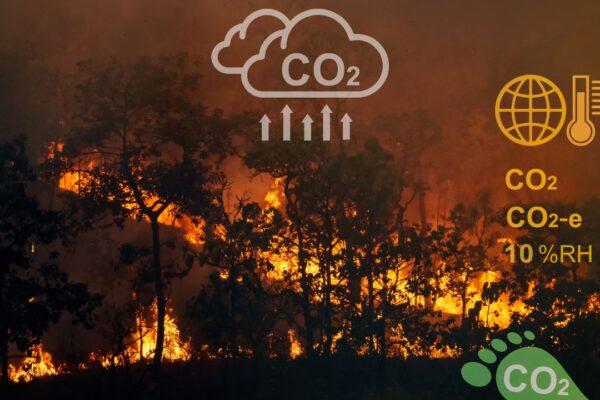Climate Action – The awareness of maintaining the environment has spread rapidly even to business. Environment became an important agenda especially with the emergence of a concept called Sustainable Development Goals (SDGs) which captures 17 global goals by the United Nations in 2015 as part of the 2030 Agenda for Sustainable Development.
One of the important agenda is SDGs 13, which is climate action. Sustainable Development Goal 13 (SDG 13) calls for urgent action to combat climate change and its impacts. Businesses play a critical role in achieving this goal by aligning their operations, strategies, and innovations to reduce greenhouse gas emissions, enhance energy efficiency, and support sustainable practices.
Here are several ways businesses contribute to SDG 13:
1. Reducing Carbon Footprint

Read Other Articles : Reducing Carbon Footprint: A Comprehensive Guide for Companies to Begin
Many companies are taking steps to lower their carbon emissions by adopting renewable energy sources (such as solar or wind power) and improving energy efficiency. By switching to green energy and reducing dependence on fossil fuels, businesses can drastically cut their carbon emissions.
2. Sustainable Supply Chain Management
Businesses are increasingly implementing sustainable practices across their supply chains, ensuring that their suppliers also meet environmental standards. This includes optimizing transportation routes, reducing packaging waste, and sourcing raw materials responsibly.
3. Innovative Technologies
Businesses are investing in innovative technologies that reduce emissions, such as carbon capture and storage (CCS) and energy-efficient machinery. Innovations in green technology not only reduce emissions but can also lead to cost savings and increased competitiveness.
4. Climate Risk Management and Adaptation
Many businesses are recognizing the risks posed by climate change and are incorporating climate resilience into their risk management strategies. This includes assessing the potential impacts of climate change on their operations and investing in adaptation measures.
5. Corporate Sustainability Goals and Reporting
Increasingly, businesses are setting ambitious sustainability goals that align with the Paris Agreement and SDG 13 targets. Transparent reporting on climate actions, using frameworks like the Task Force on Climate-Related Financial Disclosures (TCFD), helps stakeholders track a company’s progress in reducing its carbon footprint.

6. Engaging in Carbon Markets
Businesses can participate in carbon markets, which allows them to buy and sell carbon credits to offset their emissions. This helps create a financial incentive for reducing emissions and funding environmental projects that absorb or reduce CO2.
7. Advocacy and Partnerships
Many businesses are advocating for stronger climate policies and partnering with governments, NGOs, and other corporations to push forward climate action. By engaging in public policy discussions, businesses can influence regulations and frameworks that support the transition to a low-carbon economy.
By taking these actions, businesses not only contribute to mitigating climate change but also create long-term value for themselves and society. Climate action is increasingly viewed as both a business imperative and an opportunity for innovation, competitiveness, and resilience.
For companies that aim to contribute to the sustainable development goals 13, the advanced technology has allowed companies to explore ESG and carbon consulting on Satuplatform provide all-in-one solutions to. Try the FREE DEMO now!
Similar Article
Low GHG Emission, High Impact: Everyday Materials That Could Reshape Green Manufacturing
The shift toward sustainable production practices has spurred growing interest in low-carbon materials that support greener industrial processes. Emerging materials,…
Does “Eco-friendly” Labels Mean Green Product in Green Industry?
Businesses and consumers alike are navigating a flood of products claiming to be “eco-friendly” or “green.” These labels, often used…
Dilema Biomassa: Transisi Energi Berkelanjutan atau Perusakan Lingkungan?
Dalam upaya mencapai target net-zero emission pada 2060, Indonesia mendorong transisi energi dari bahan bakar fosil ke sumber energi terbarukan.…
Energi Terbarukan di Indonesia: Mengapa Surya dan Hidro Menjadi Pilihan Utama?
Sebagai negara kepulauan terbesar di dunia, Indonesia menghadapi tantangan besar dalam memenuhi kebutuhan energinya. Di tengah komitmen untuk mencapai net…
Emisi Karbon Penerbangan Meningkat: Tantangan Baru bagi Industri Aviasi
Emisi Karbon Sektor Penerbangan Setelah mengalami penurunan drastis selama pandemi COVID-19, industri penerbangan global kini menunjukkan pemulihan yang signifikan. Namun,…
Adaptasi Bisnis di Era Krisis Energi
Pasokan bahan bakar menjadi semakin terbatas, dengan harga yang melambung tinggi, merupakan salah satu bukti bahwa dunia sedang mengalami krisis…







